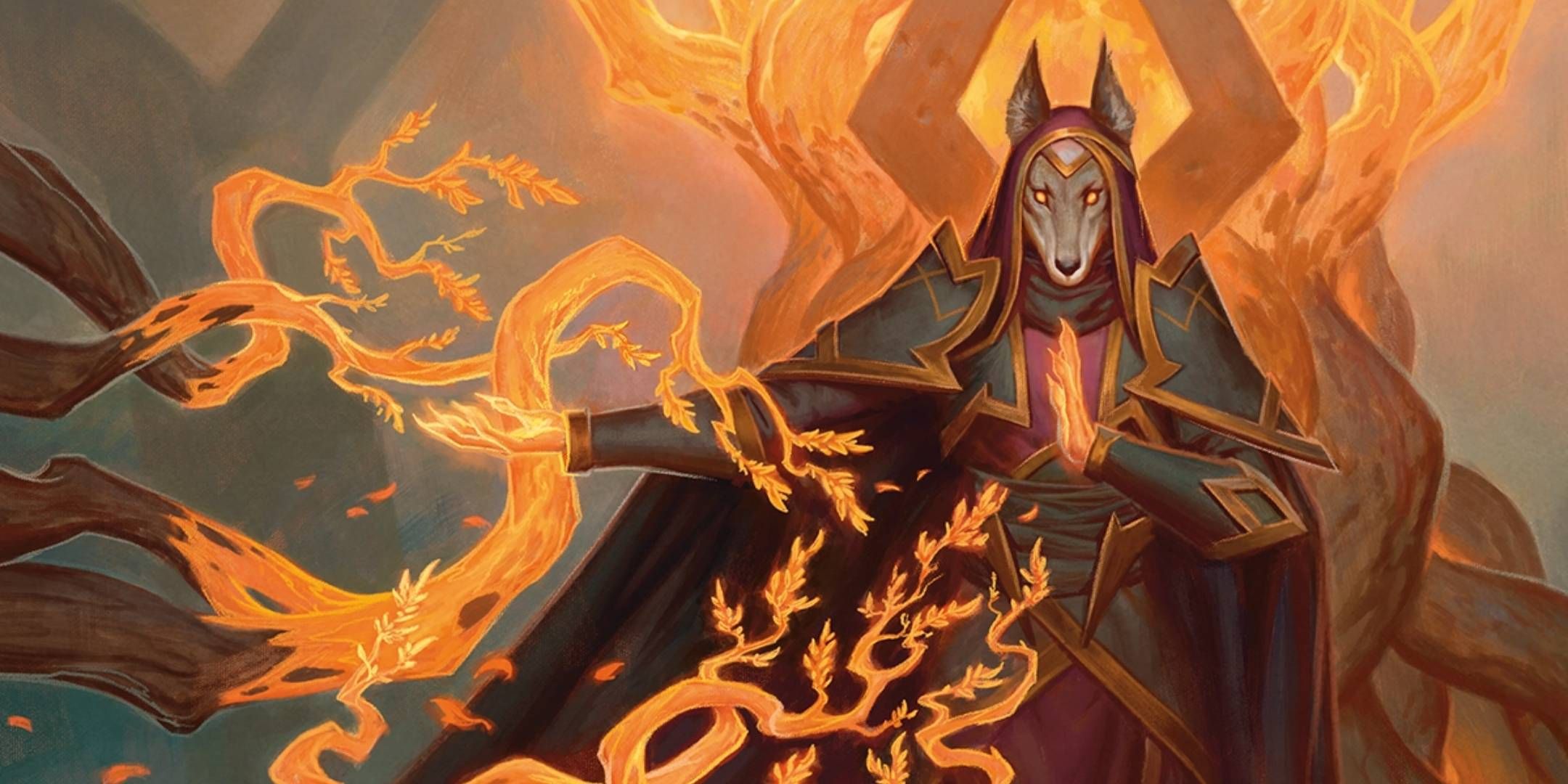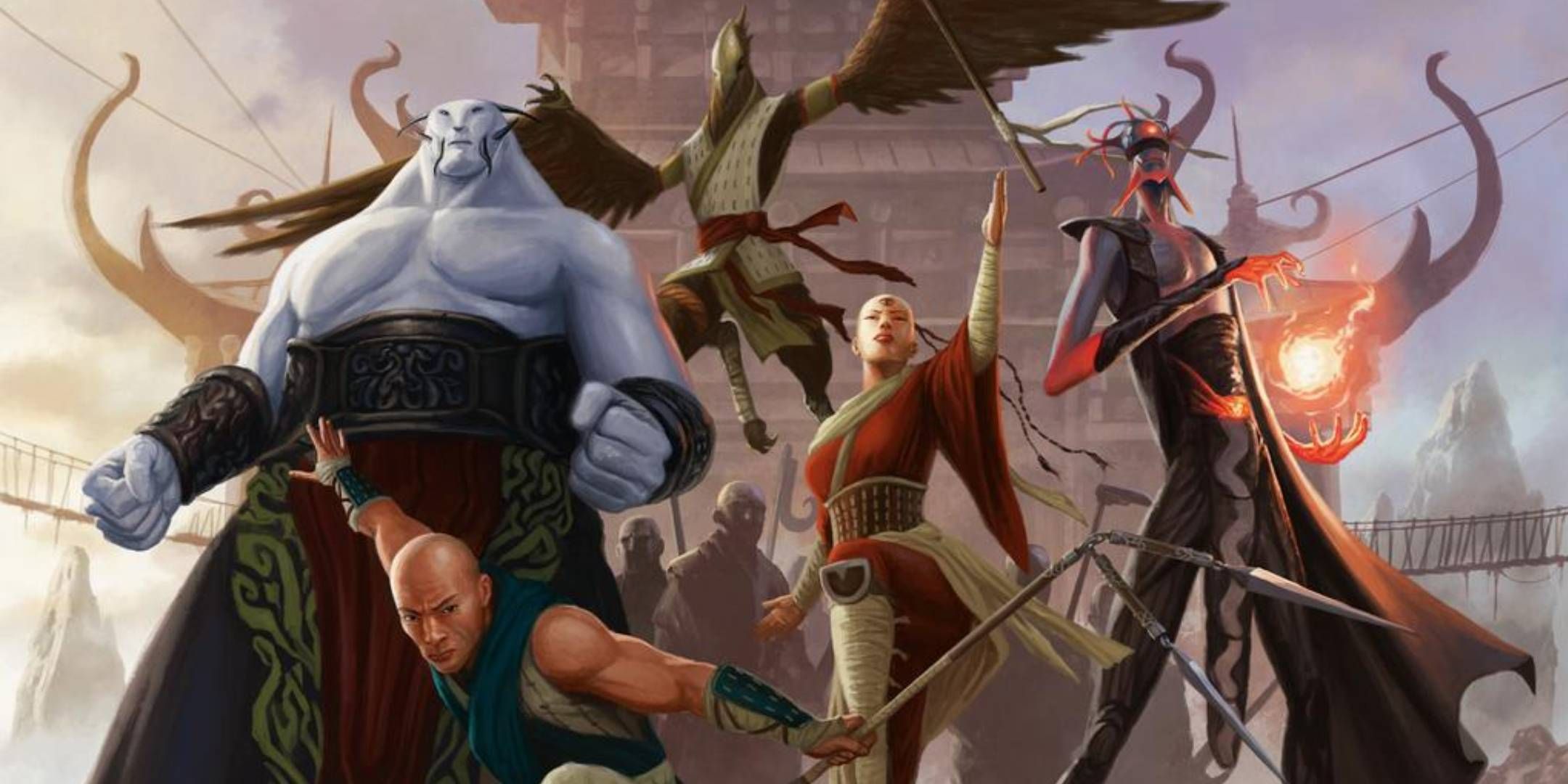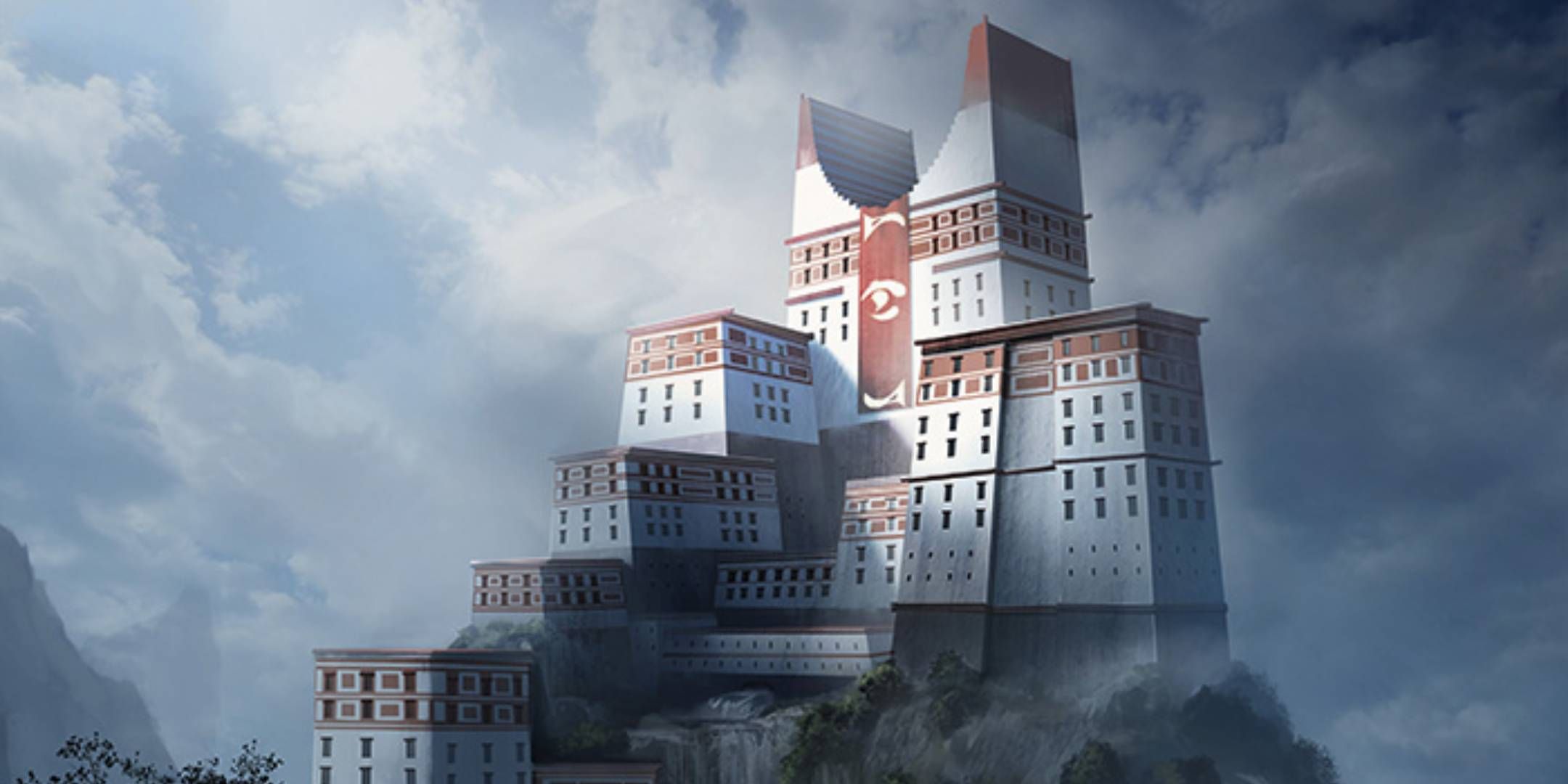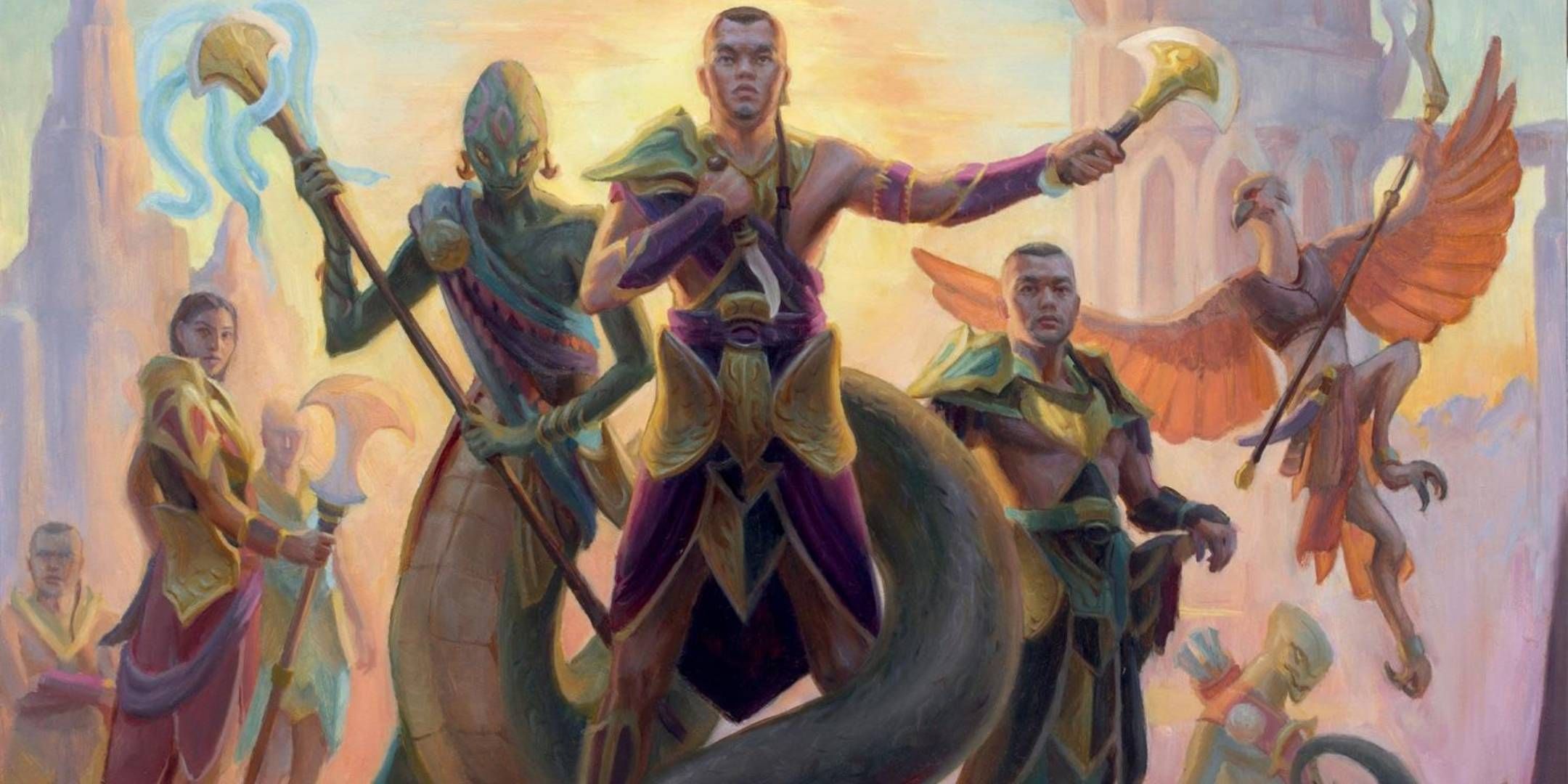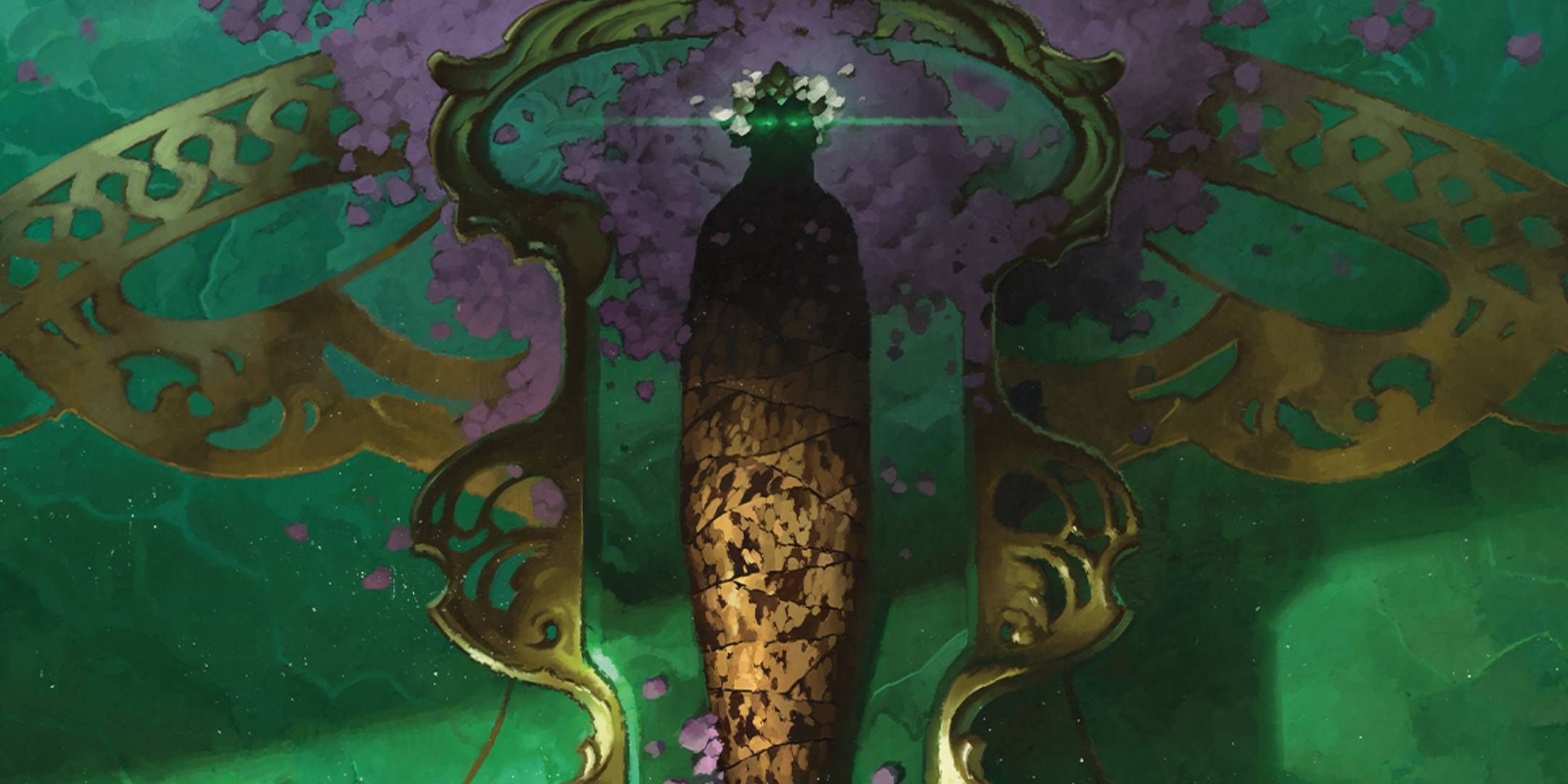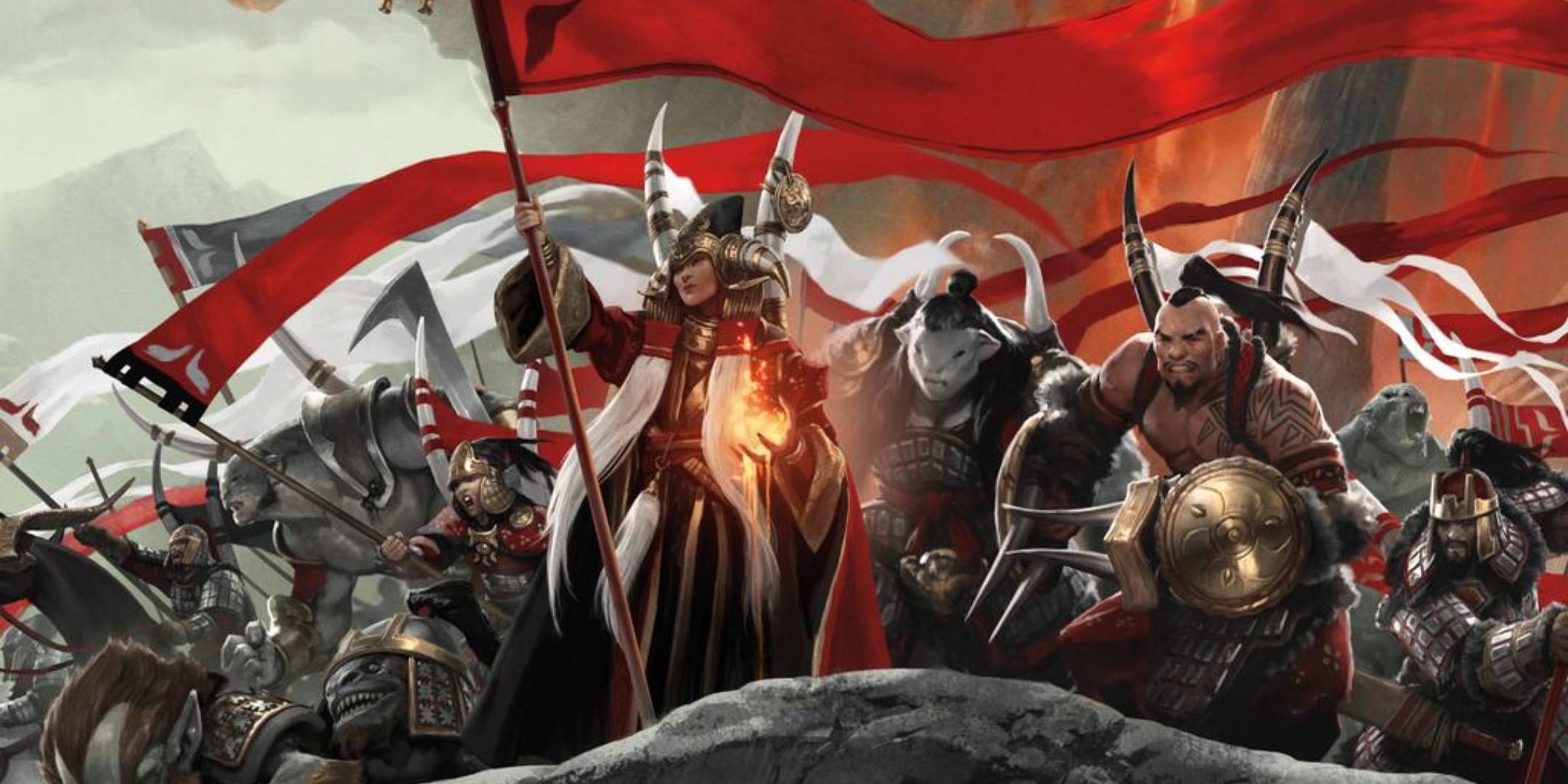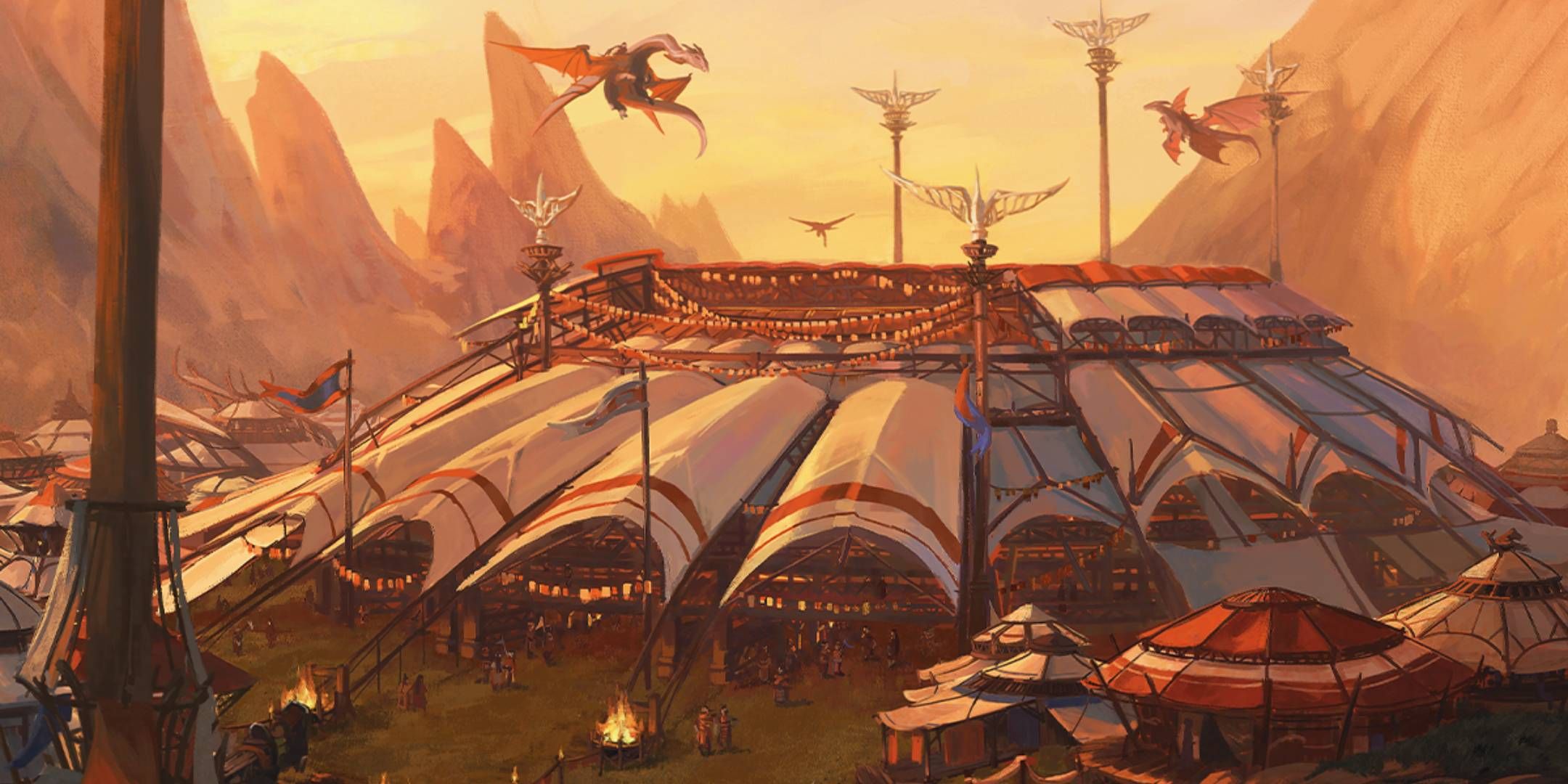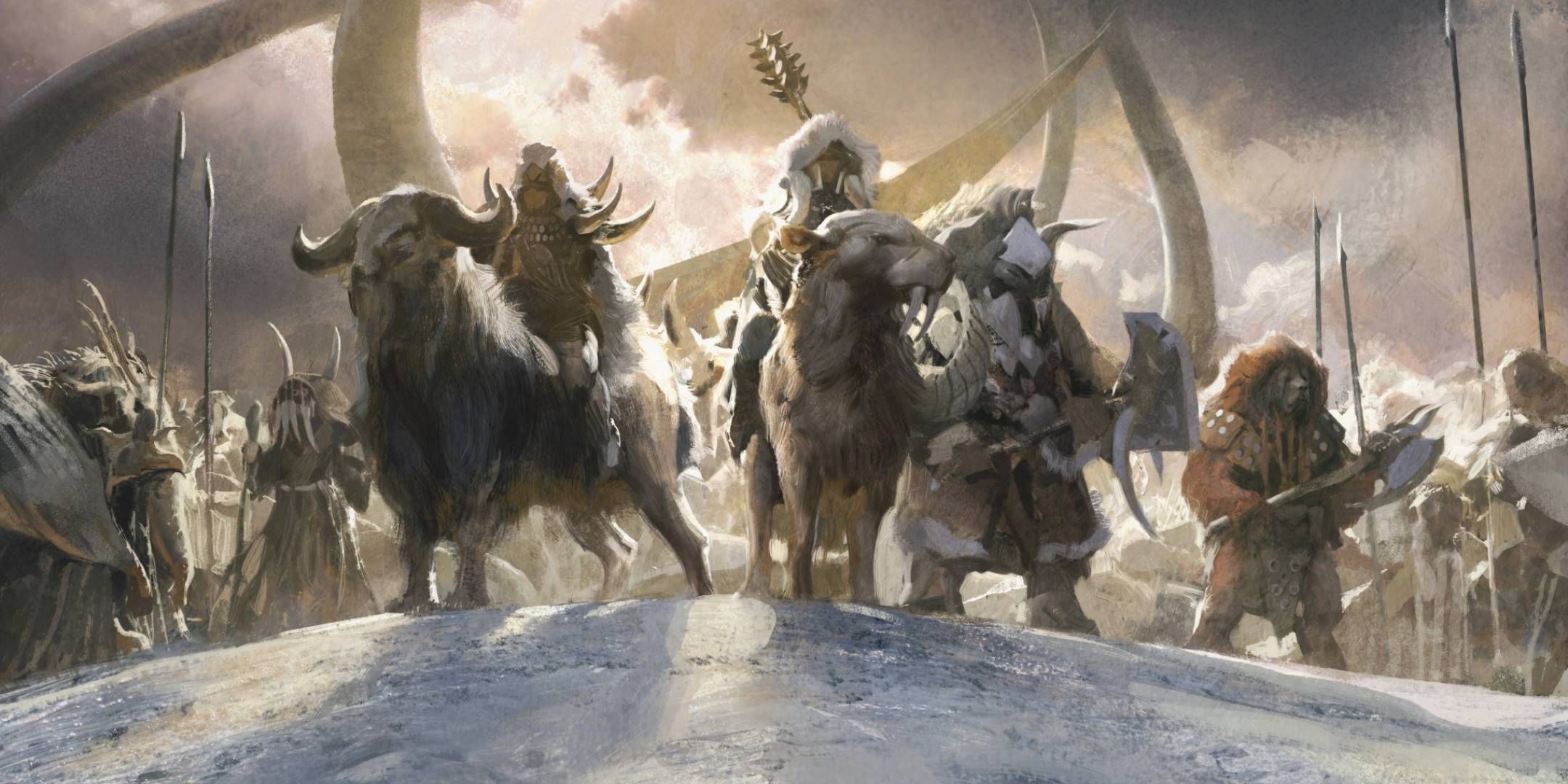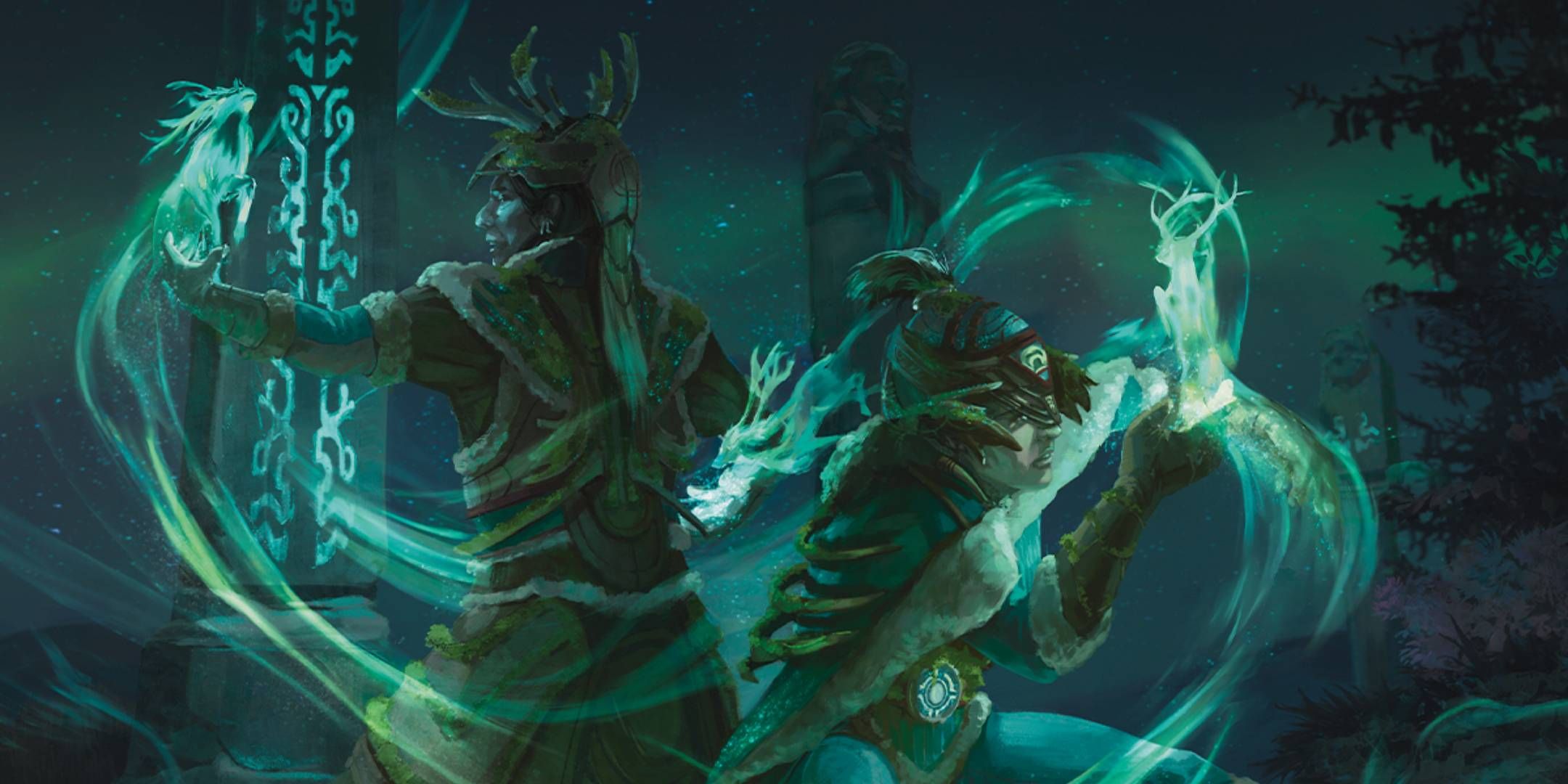Tarkir is one of the most storied planes in Magic: The Gathering. Long ago, it was ruled by three clans: the Abzan, Jeskai, Sultai, Mardu, and Temur. Dragons were originally absent until the then-planeswalker Sarkhan Vol was sent back in time to save Ugin the Spirit Dragon, which caused Dragonlords to rise up and take over in an event known as the Khanfall.
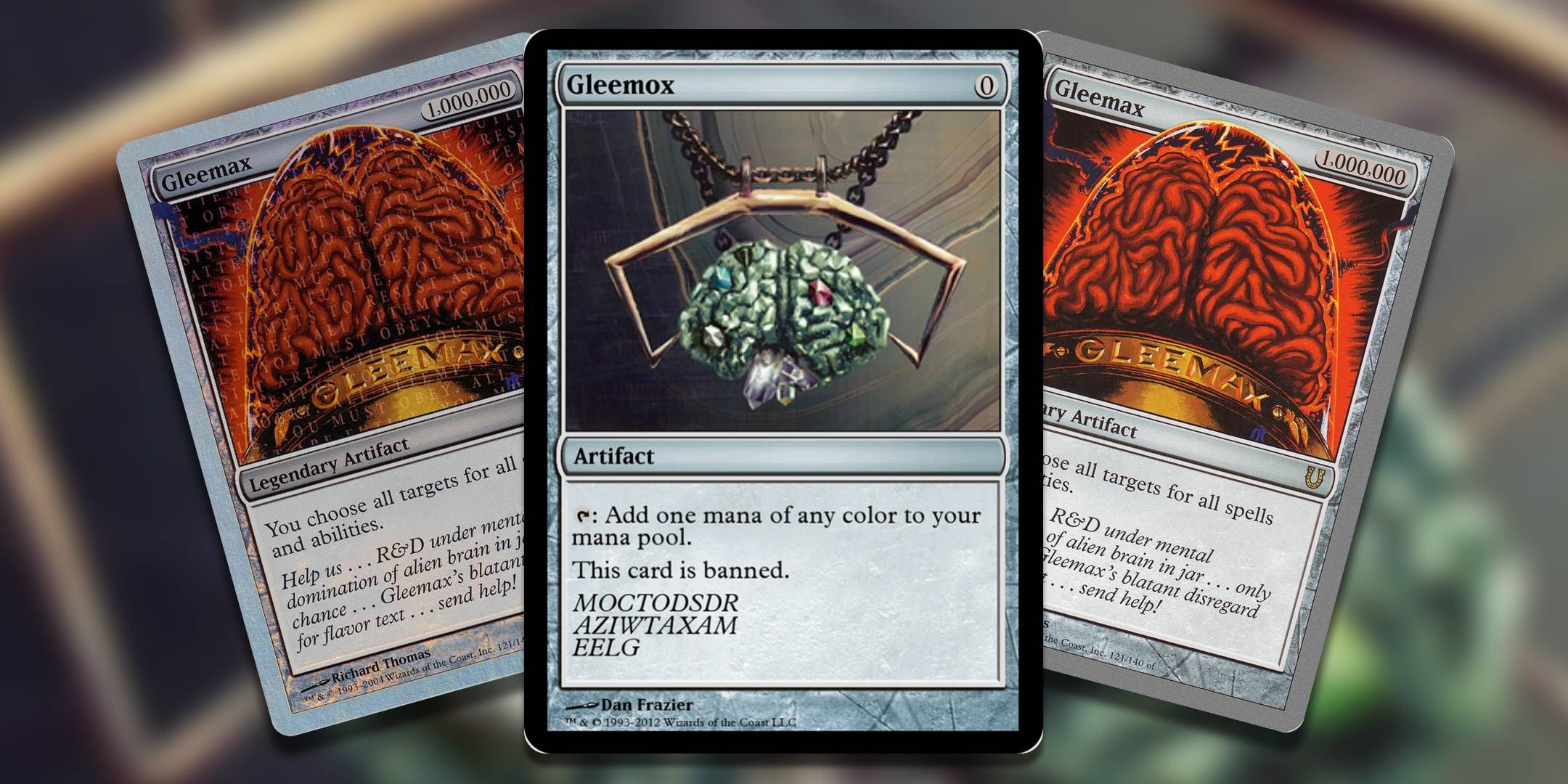
Related
Magic: The Gathering – What Is Gleemox?
There are some weird Magic: The Gathering cards out there, and the Gleemox is certainly one of the strangest ones.
After the invasion of New Phyrexia, the people under the Dragonlords rose up against them, killing them and driving them out to reclaim their lost history. The Dragonlords are gone, with the clan system returning to Tarkir, though the plane still has various spirit dragons both docile and hostile.
The Abzan
The Abzan (aligned with white, black, and green mana) greatly value life and death and are quite literally undyingly loyal to the clan. They hold deep value in family and traditions, with many members of the clan either merchant, farmers, or artisans.
There are five different houses in the Abzan clan, each with their own responsibilities. House Gudal controls the infrastructure and water distribution throughout Abzan territory. House Emesh are the primary weapon makers. House Mevak are responsible for making armor and clothing. House Fenzala are traders who have various connections to those outside of the Abzan. Lastly, House Zanhar is the oldest family of the Abzan, with a few minor houses spinning off from it. There are more houses, but these five and the largest and wield the most power both politically and socially.
For military strategy, the Abzan utilize a defensive style of battle. They coax enemies into areas where they have massive defenses where archers and mages can attack hostiles from afar. They also summon ancestors in battle to help overpower their enemies through sheer numbers. “Slow and steady” is the motto of the Abzan’s defensive style.
One of the most important things to the Abzan is the Kin-Tree. This is a sacred tree that houses the spirits of the Abzan who have passed. You must bond with a Kin-Tree in order to be considered part of a family within the Abzan. You cannot be in the clan without having bonded to one of the Kin-Tree. The ceremony involves offering one’s blood to the tree to be accepted by its spirits. Those connected to a Kin-Tree can summon the spirits of those who bonded to it before them. It is possible to be severed from a Kin-Tree, but it is very rare.
The Abzan’s magic is done primarily through manipulating the earth as well as summoning spirits. Those who can use earth magic are known as Earthcarver mages, while anyone connected to a Kin-Tree can call upon spirits.
The dragons used by the Abzan are considered to be a part of a family, though these are no bonded to a Kin-Tree. They tend to have mild tempers while being heavily large and defensive. For attacks, Abzan dragons can shoot searing light that can melt the flesh off whoever is unlucky enough to be on the receiving end.
Abzan territory is in the Shifting Wastes region of Tarkir. There are a few cities, including Qatros Karst and Great Arashin cities. The Salt Road goes throughout Tarkir and serves as the Abzan’s trading route.
The Jeskai
The Jeskai are led by monks who follow the “Way.” The clan desires unity and a shared understanding of the world. They wish for Tarkir to be fully unified with each other, but because they want it so bad, they can be very stubborn in trying to get what they want. The Jeskai prefer diplomatic outcomes, but are no strangers to fighting if things go south.
The Jeskai consist of two primary parties – monks who practice the Way, and civilians who assist the monasteries and those within them. Those who lead the monasteries are called Waymasters, who govern the Jeskai while civilian leaders act as advisers. Monks offer protection and guidance to the civilians, who in turn bring them supplies and materials that the monks need.
The monks dedicate their life to following the Way, and have to leave behind personal attachments and give up most material possessions. Rather than owning things themselves, they’re encouraged to share their belongings within the monasteries. There are two different kinds of monks, warriors and scholars, which are paths any monk can take.
The Way is the writing of Shu Yun which was an ancient text from before the rise of the Dragonlord. The Way’s mantra is “To achieve peace, achieve unity,” which is the motto of the new Jeskai Way. The three principles the Jeskai teaches are cooperative action, undivided thought, and aligned heart.
There are three different monasteries in the Jeskai clan, each aligning with a different color of mana and following a different principle. The Cori Mountain Monastery is red-aligned and follows the principle of cooperative action. Dirgur Lake Monastery is the blue monastery that follows the principle of undivided thought. Lastly, the Storm Crane Monastery is the white-mana monastery that emphasizes the aligned heart principle.
The magic that the Jeskai uses revolves around manipulating the body and mind, generally in the form of physical augmentation. Most of the civilians cannot wield magic, something that primarily only the monks can utilize. Depending on the monastery, the magic taught to monks varies.
The dragons within the Jeskai tend to be calm while having high intelligence and perception. These dragons can shoot ice that has the ability to freeze whoever it strikes in one instant.
The Jeskai Clan makes its home in the eastern Tiansun mountain range. In addition to the three monasteries, there is an extra one called the Highspire Monastery where a mixture of all three teachings of the main monasteries are taught. Riverwheel Village is a settlement built into the side of a cliff, and Pearl Lake is a location many monks will make a pilgrimage to in order to meditate.
The Sultai
The Sultai are the clan aligned in black, green, and blue mana. They are large necromancers and will revive those lost through necromancy so that they can continue to serve the Sultai and lead its people. The Sultai’s warriors are small in number, but thanks to their familiarity of the land and prowess in stealth, they maintain power on Tarkir.
Thanks to how much fertile ground is in Sultai territory, they have many desired materials and food that the Sultai trade in order to maintain diplomatic partnerships that they can manipulate for their own personal gain to rise up in power in Tarkir.
There is no clear leader in the Sultai. Instead, the power structure in the Sultai clan is decentralized. The Fangkeeper is considered the Sultai’s ruler, but doesn’t actually provide much when it comes to an average day. Instead, elected mayors in each village make the primary decisions.
The main belief of the Sultai is “All living things die. Their essence nourishes the land and enables the next harvest.” Essentially, this means that even after death, the life energy is returned to a large pool of life force to be called on later as new life. When one previous dead is returned to life, this is done through a ritual known as the Rite of Renewal. This is a respectful ritual, however, in battle, a necromancer can quickly revive a non-sentient creature to use as a defense if needed.
Magic used by the Sultai involves the manipulation of life essence, which can be used to weaken or strengthen either its user or its target. Those with prowess in magic tend to undergo formal training, with the most promising of them training under the most powerful Sultai mages including naga teachers.
The dragons a part of the Sultai tend to participate in religious festivals and act as guardians of the villages with naga. Some dragons are brought in solely based on their beauty, but are still capable of breathing out a poisonous breath that suffocates before the toxin can even take root.
Kheru City is the central city where magical schools are located along with practice grounds for warriors. Kishla Stilt Village is a small fishing village. There are islands, swamps, rivers, and forests surrounding Sultai territory as well.
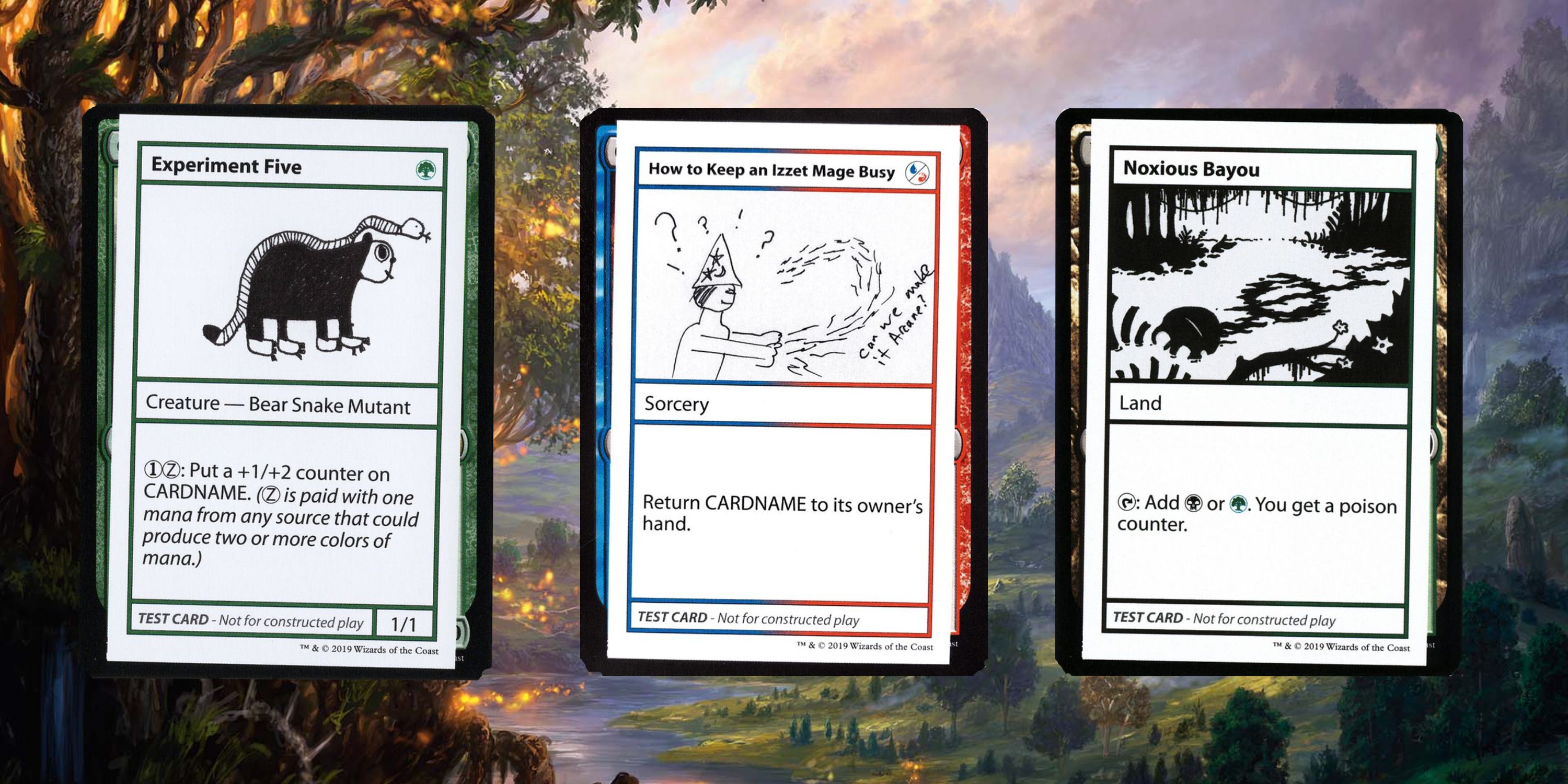
Related
Magic: The Gathering – What Are Playtest Cards?
That’s not final art, unfortunately.
The Mardu
The Mardu (red, white, and black aligned) are nomadic warriors. They make their home in a central territory and use their position to form treaties with the other clans to ensure the safety of trading caravans from dragons and other threats.
The Mardu clan has a very military structure. There isn’t much of a distinction between a civilian and military warrior, with both groups learning from each other and practicing their ways. The clan is led by its khan who has a council of generals that is known as the Dalkovan Assembly, with the dalkovan a name for each subgroup in the Mardu. Many generals were either those who rose up against the dragonlord Kolaghan, or were venerated warriors during the Phyrexian invasion.
Unlike other clans, the Mardu have no permanent settlements. Instead, they travel and are able to set up camps in under a day. The Mardu possess a skill that makes it easy for them to train any kind of animal to act as a member of the clan.
There are three major roles in the Mardu’s army: infantry, cavalry, and siege engineers. The Mardu also follow three strict laws that are known as The Decree of Thunder. The values are loyalty is earned, community is strength, and victory is survival. To keep on the theme of threes, there are three names that the Mardus can have. One is the family name given by parents, one is the chosen name when a Mardu can choose their name after completing a trial, and lastly, a given name which is awarded based on a feat done in the name of the Mardu.
The magic utilized by the Mardu is based on lightning magic and is used to enhance physical attributes and weaponry. Some Mardu can also create flames and control raw elemental energy. Those who can control storms are known as Stormsingers, and act as the Mardu’s spiritual leaders.
Mardu dragons are treated as any other member of the Mardu, and are required to contribute on and off the battlefield. These dragons are very quick, while the smaller dragons are used as mounts for Mardu warriors and the large dragons are used to transport troops and supplies. They have lightning breath capable of shocking their opponents drastically to take them down.
The Temur
The Temur clan is the green, blue, and red-aligned clan on Tarkir. They primarily live in mountain terrain and are adapted for long winters. Unlike other clans, the Temur are large isolationists and prefer to protect their lands and traditions from other clans rather than work with them and see outsiders as risks.
The Temur are semi-nomadic, and transition between villages and mobile camps throughout the year. During summers the Temur tend to move around a lot, while winter, spring, and fall are spent in villages. The leader of the Temur is the Dragonclaw, which is chosen by the members of the Temur. They are joined by the Twice Whisperer, who is appointed by spirits the Temur communicate with. Together, the Dragonclaw and Twice Whisperer govern the clan, with the Dragonclaw responsible for more physical matters and the Twice Whisperer responsible for more spiritual affairs.
Wrestling is the most popular athletic competition for the Temur. Another, less physical favorite pastime is storytelling, often done after a long hunt in order to celebrate and make long winter nights go by quicker. All of the Temur believe in the Endless Song, which is energy that travels across the land and connects everyone in the past, present, and future together. They do not view the Endless Song as anything other than it simply exists.
The magic the Temur wields is based on channeling elemental energies to empower and defend the clan and its grounds. Temur mages have the ability to bring the land and other natural objects to life. Uniquely, the magic used by the Temur takes the shape of animals that are important to its caster.
Dragons a part of the Temur are treated as family. The Temur form strong bonds with them, and the dragons help in various Temur activities and fighting. The strongest dragons protect the borders of Temur territory and are incredibly protective towards the members of the clan. They have traditional fire breath for a weapon, which also helps the Temur in its icy territory.
Temur land primarily is in the Qal Sima mountain range. There are only two semi-permanent locations in Temur territory, the Karakyk Glacial settlement (primarily used in winter) and Mistrise Village (primarily used during the spring and fall seasons).
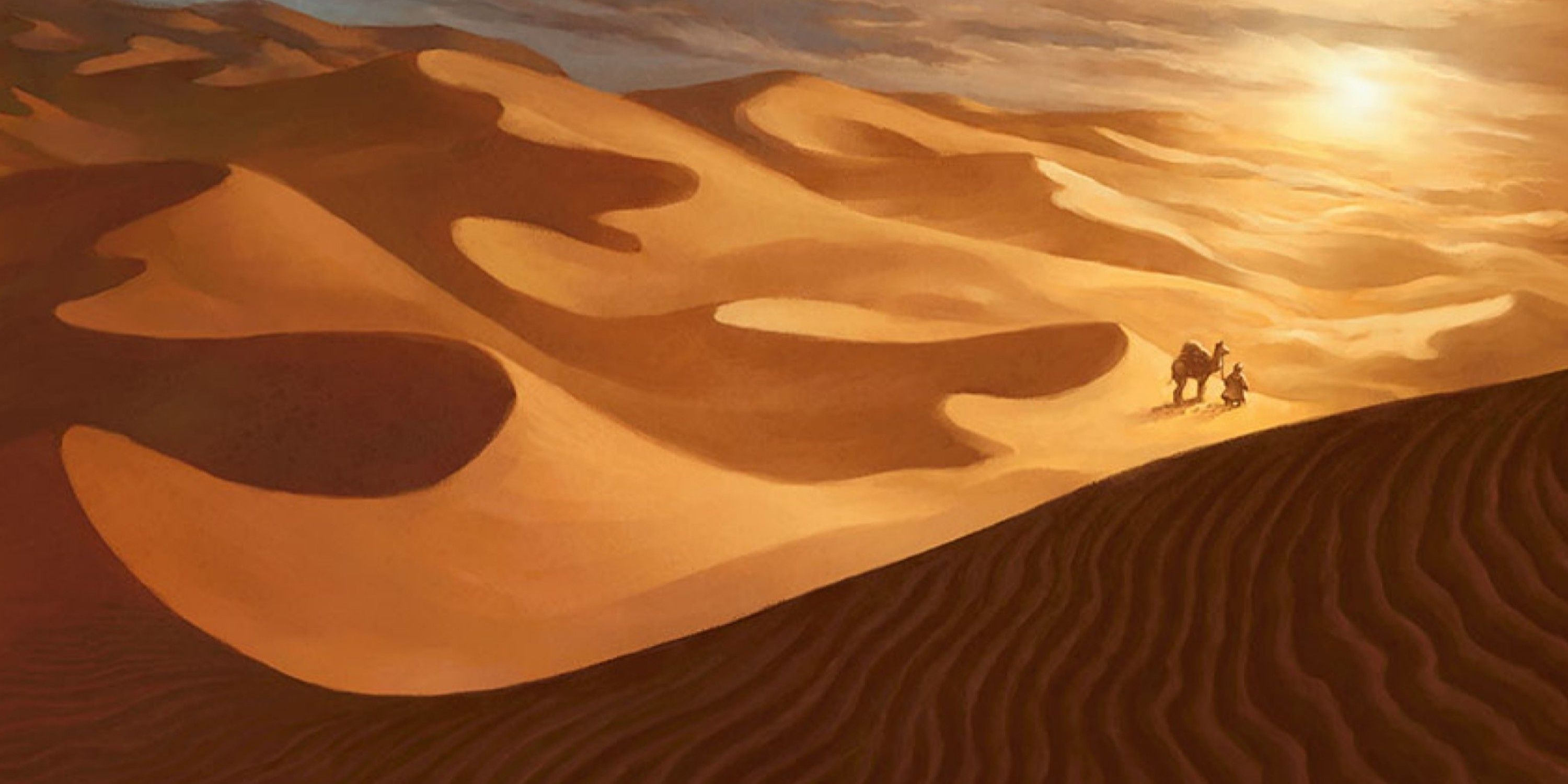
Next
Magic: The Gathering – What Is The Rabiah Scale?
Magic: The Gathering has dozens of planes to explore, but some are more likely to return than others.


